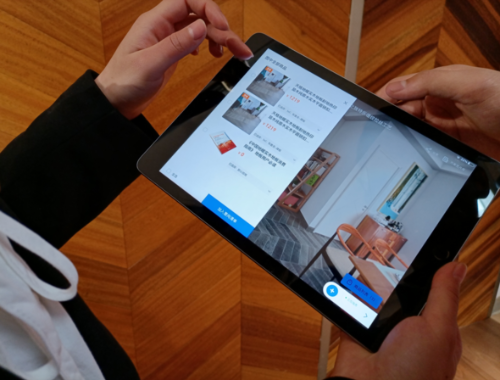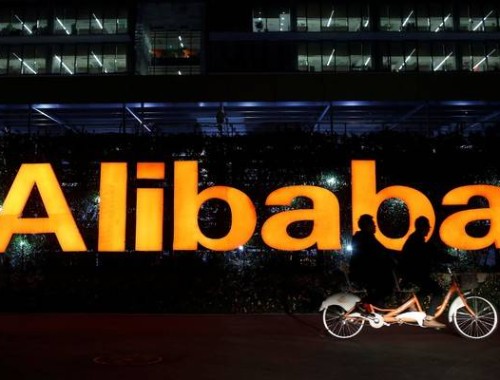Alibaba’s annual web sales easily surpass U.S. e-retail sales

Alibaba Group Holding Ltd. today reported financial results for its fiscal fourth quarter ended March 31 and the 12-month period, and the staggering sales and profits leave little doubt that China’s leading e-commerce company continues to prosper despite China’s economic malaise.
Chinese consumers purchased 3.092 trillion yuan ($US485 billion) worth of goods on Alibaba’s online marketplaces in fiscal 2016, principally via Taobao and Tmall, an increase of 27% from 2.444 trillion yuan a year earlier. To put that into perspective, $485 billion is nearly 42% more than the $341.7 billion all U.S. online retailers sold in 2015.
Plus, Alibaba earned net income of $11.056 billion in its just-concluded fiscal year, nearly triple its profits from the prior year, giving the Chinese e-commerce giant more money to spend on acquisitions and other investments. Among many other recent investments, Alibaba last month paid $1 billion to take a controlling stake in Lazada, a company that operates e-retail platforms across Southeast Asia that generated $1 billion in sales, according to Alibaba.
Alibaba’s $11.056 billion in profits is 55% greater than the combined profit in the most recent fiscal year of the world’s largest retailer by sales, Wal-Mart Stores Inc. ($4.57 billion in profit), the world’s largest online retailer by web sales, Amazon.com Inc. ($596 million), and North America’s leading online marketplace operator, eBay Inc. ($1.947 billion.)
While most of Alibaba’s revenue and profit comes from the Chinese online shopping portals it operates for Chinese consumers and businesses, international marketplaces accounted for 9% of Alibaba’s revenue in its recent fiscal year. Revenue from its international retail business, primarily AliExpress.com, increased 25% to $342 million, while revenue from its international wholesales business, largely the Alibaba.com business-to-business marketplace, grew 15% to $841 million. Alibaba did not report the value of goods sold on those marketplaces.
Alibaba—like its big China competitors JD.com, No. 1 in the Internet Retailer 2016 China 500 and Amazon China (No. 4)—are also selling more imported goods to Chinese online shoppers. Alibaba says sales on its Tmall Global marketplace that features overseas products from more than 100 global brands increased 180% in its fiscal fourth quarter over the prior-year period, though it did not disclose the value of those sales.
“Alibaba Group finished the fiscal year on a very strong note,” CEO Daniel Zhang said in a statement accompanying the results. “Our focus on long-term strategic priorities—globalization, rural expansion, building a world-class cloud computing business and creating a comprehensive media and entertainment platform—has laid a strong foundation for future growth.”
The economic slowdown in China does not seem to be having a big impact on Alibaba, Colin Sebastian, e-commerce analyst at Robert W. Baird & Co. who follows e-commerce companies, said in a note to clients. “Alibaba's results once again demonstrated the resiliency of secular e-commerce trends and the efficiency of its marketplace model. Highlighted by accelerating revenue growth.”
Consumers purchased $115 billion worth of goods on Alibaba’s Chinese e-commerce sites in the fourth quarter, an increase of 24% from the same quarter a year earlier. A big driver was the increase in active buyers, which reached 423 million in the quarter, up 21% from 350 million a year earlier.
Revenue for the quarter reached 24.181 billion yuan ($3.751 billion), a 39% up from 17.425 billion yuan in the same quarter of 2015. The company’s revenue grew even faster than purchases on Alibaba’s sites as merchants increased their marketing spend to generate more sales on Taobao and Tmall, according to Alibaba.
Alibaba also reported that more than 100 international brands had joined the Tmall Global and its GMV grew over 180% year-over-year in this quarter. Tmall Global is a subsite of Tmall and mainly help overseas products sell into China.
The fastest-growth business for Alibaba is its cloud computing service AliCloud, whose revenue grew 175% to 1.066 billion yuan ($165 million) in the fourth quarter from 388 million yuan in the same quarter of fiscal 2015. Alibaba said 2.3 million customers, including 500,000 paying customers have started to use AliCloud services.
Alibaba also reported its revenue from its domestic B2B business grew 28% to 1.083 billion yuan revenue ($168 million), while its international B2B revenue jumped 35% to 590 million yuan ($92 million). For more information about Alibaba’s B2B business, please visit B2B news site B2becommerceworld.com.
Alibaba also reported its shipping affiliate Cainiao now can deliver orders the same day they are placed in 13 cities and by the second day in 88 cities. Alibaba also said Cainiao had built 14,000 delivery and service facilities in rural villages.
“For consumers, Alibaba’s marketplace is not just a place for selling, but a fun place to visit,” Mo Daiqing, senior analyst at China E-commerce Research Center, a Chinese research firm, tells Internet Retailer. “People can shop there while exchanging ideas with friends, interacting with merchants and watching entertaining content.”
For the fiscal fourth quarter ended March 31, Alibaba reported:
Net revenue was 24.184 billion yuan ($3.751 billion), up 39% up from 17.425 billion yuan in the same quarter of 2015.
Net income of 5.314 billion yuan ($824 million), an increase of 85% from 2.869 billion yuan a year ago.
For the 2016 fiscal year ended March 31, Alibaba reported:
Net revenue of 101.143 billion yuan ($15.686 million), a 33% increase from 76.204 billion yuan in the prior fiscal year.
Net income of 71.289 billion yuan ($11.056 billion), up 193% from 24.320 million yuan in fiscal year of 2015.
(Source: internetretailer.com Author: FRANK TONG)



























 沪公网安备31010402003309号
沪公网安备31010402003309号